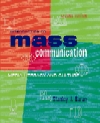 |
1 |  | 
Siquis were |
|  | A) | attractive, artful 15th-century business cards. |
|  | B) | common 15th -century European pin-up want ads for a variety of products and services. |
|  | C) | early personal ads in local papers. |
|  | D) | carved stone announcements in ancient Greece. |
 |
 |
2 |  | 
Advertising in the United States was a small business until the mid-1800s, when the Civil War and __________ combined to expand the social and cultural landscape. |
|  | A) | the Spanish-American War |
|  | B) | the introduction of radio |
|  | C) | industrialization |
|  | D) | the freeing of the slaves |
 |
 |
3 |  | 
F. Wayland Ayer is credited with ____________ in 1877. |
|  | A) | creating the concept of brands |
|  | B) | writing the first creative ad |
|  | C) | founding the first full-service ad agency |
|  | D) | all of the above |
 |
 |
4 |  | 
In the span between the Civil War and World War I, three factors moved the advertising industry to establish professional standards and to regulate itself. They were: the establishment of the Federal Trade Commission, the work of the muckrakers, and the |
|  | A) | abuses of patent medicine advertisers. |
|  | B) | declines in business profits. |
|  | C) | demands from magazines for more ethical operation. |
|  | D) | complaints about sexual content in advertising |
 |
 |
5 |  | 
Near the turn of the 20th century, the Audit Bureau of Circulation was established to |
|  | A) | count the number of readers who saw each ad in a magazine. |
|  | B) | verify magazine circulation claims. |
|  | C) | ensure that advertisers' ads were placed in the most appropriate spot in a given magazine. |
|  | D) | all of the above |
 |
 |
6 |  | 
A parity product is one that |
|  | A) | possesses characteristics that set it apart from other brands in the same product category. |
|  | B) | possesses consistent quality, regardless of when or where it is purchased. |
|  | C) | is essentially the same as others in its product brand category. |
|  | D) | is priced fairly in relation to its competitors. |
 |
 |
7 |  | 
Clutter refers specifically to |
|  | A) | too many individual brands in a given product category. |
|  | B) | too many advertisers chasing a limited number of consumers in a given demographic category. |
|  | C) | too much advertising space in a daily newspaper. |
|  | D) | the cramming of several short commercial spots into a minute or two of broadcast time. |
 |
 |
8 |  | 
Account management is the department in an ad agency in which |
|  | A) | the advertising is developed from idea to ad. |
|  | B) | an account executive serves as liaison between agency and client. |
|  | C) | the decisions about where and when to place ads are made. |
|  | D) | a product's market viability is tested. |
 |
 |
9 |  | 
The standard measurement of the effectiveness of an ad's placement is judged by its |
|  | A) | cost per thousand (CPM), the cost of reaching 1,000 audience members. |
|  | B) | cost per hundred (CPK), the cost of reaching 100 audience members. |
|  | C) | cost per million (CPM), the cost of reaching 1,000,000 audience members. |
|  | D) | cost per million (CPR), the cost of reaching 1,000,000 audience members. |
 |
 |
10 |  | 
An ad agency that earns revenues through a retainer |
|  | A) | is compensated through a charge on the placement of ads, typically 15% of the cost of the time or space. |
|  | B) | bills clients at an agreed-upon price for ad production. |
|  | C) | bills clients by the hour for essential services. |
|  | D) | bills clients by the day for essential services. |
 |
 |
11 |  | 
Which of the following advertising strategies is legal? |
|  | A) | Half-truths, such as claiming that each slice of Profile bread contains half the calories of other breads' but not mentioning that the slices are half as thick. |
|  | B) | Unsubstantiated claims, such as Wonder Bread's claim that it builds strong bodies 12 ways but cannot list them. |
|  | C) | Puffery, such as describing calories as food energy. |
|  | D) | Misleading implications, such as close-ups to make a toy seem larger. |
 |



 2002 McGraw-Hill Higher Education
2002 McGraw-Hill Higher Education